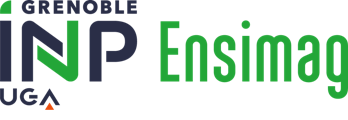Volumes horaires
- CM 36.0
- Projet -
- TD -
- Stage -
- TP -
- DS -
Crédits ECTS
Crédits ECTS 6.0
Objectif(s)
The web has been constantly evolving from a distributed hypertext system to a very large information processing machine. As fast as it is, this evolution is grounded on theoretical principles borrowing to several fields of computer science such as programming languages, data bases, structured documentation, logic and artificial intelligence. The smooth operation of the past and future web at a large scale is relying on these foundations. The goal of this course is to present them, the problem that they solve as those that they uncover. It considers three milestones of this evolution: XML, the social web and the semantic web.
Pierre GENEVES, Manuel ATENCIA ARCAS
Contenu(s)
The first part aims at introducing programming language foundations, algorithms and tools for processing tree-structured information, and for the analysis of queries and programs that manipulate trees. This part consists in an introduction to relevant theoretical tools with an application to NoSQL and XML technologies in particular. The theoretical part introduces tree grammars, finite tree automata, classical tree logics and a recent mu-calculus of finite trees, in connection to practical problems and technologies such as XPath/XQuery, DTD, schemas, etc. Applications are illustrated through scalable validation of document streams, efficient query evaluation, static analysis of expressive queries in the presence of constraints, and static type-checking of programs manipulating labeled trees. The course also aims at presenting challenges, important results, and open theoretical issues in the area of NoSQL programming.
The second part summarizes data models and algorithms required to extract, manage and access massive amounts of social content. The course examples are drawn from real-world applications such as URL search and recommendation on Delicious, group recommendation in MovieLens and extracting travel itineraries from Flickr photos. The course goals are: acquire knowledge on scalable algorithms for processing large volumes of social data and extracting value from that data and learn how to run and interpret large-scale user studies.
The third part introduces the semantics of knowledge representation on the web. The semantic web extends the web with richer and more precise information because it is expressed in a formal language using a vocabulary defined in an ontology (a structured vocabulary of concepts and properties defined in a logic). Ontologies are used for describing web resource content and reasoning about these resources formally. We introduce the semantic web languages (RDF, RDFS, OWL) and show their relations with knowledge representation formalisms (conceptual graphs, description logics) and XML. This provides tools for reasoning with ontologies and, in particular, to evaluate queries. However, the distributed nature of the web leads to heterogeneous ontologies which must be matched before using them. We discuss ontology matching and explain how to semantically interpret the relations between ontologies. Finally, this is applied to network of peers using knowledge together.
PrérequisNotions de base en langages, logique, sémantique, compilation.
L'évaluation finale est un examen écrit
L'examen existe uniquement en anglais 
Le cours est programmé dans ces filières :
- Cursus ingénieur - Master 2 Informatique - Semestre 9 (ce cours est donné uniquement en anglais
 )
)
Code de l'enseignement : WMM9MO25
Langue(s) d'enseignement : 
Le cours est rattaché aux structures d'enseignement suivantes :
- Equipe Image,Vision,Interaction Multimédia,Bioinfo
Vous pouvez retrouver ce cours dans la liste de tous les cours.
Slides of the course are available from:
http://pierre.geneves.net/teaching-mosig.html
Other related material can be found at:
http://pierre.geneves.net/other.html



